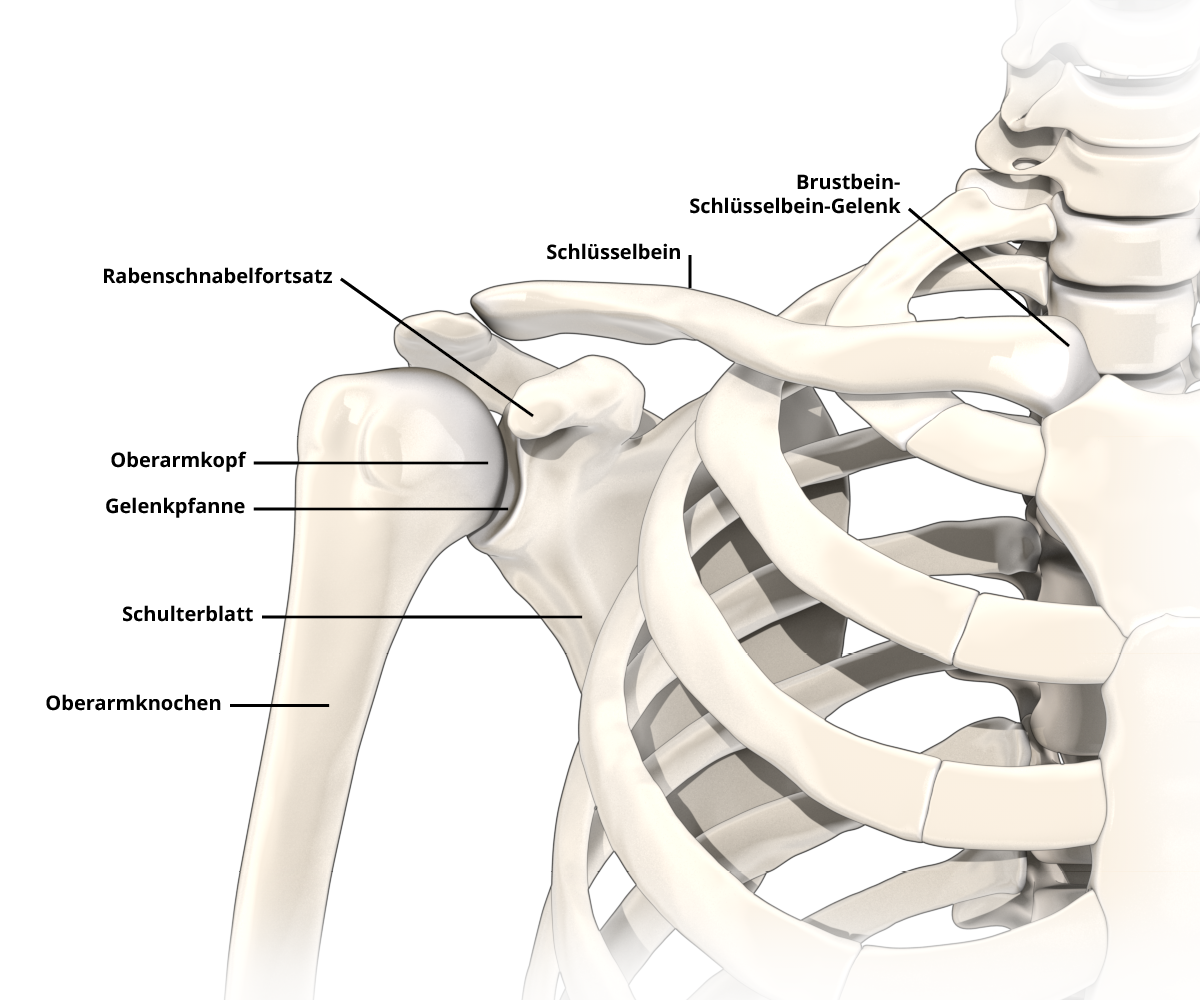
Osteoarthritis of the shoulder joint
Osteoarthritis is articular damage caused by wear and tear of the joints. Due to the increasing average age of the population and the increasing strain on the joints, symptoms of wear and tear are also increasing.
Osteoarthritis often occurs in the hips and knees, and is increasingly common in the shoulder joint.
Symptoms
In the early stages, pain is only occasional and coincides with specific movements – mostly those involving twisting or lifting the arms overhead.
In the advanced stage, the pain increases when you move. The patient also experiences pain when resting and the sensitivity to pressure in the shoulder area is very high, especially at night. Patients report a loss of strength, as well as stiffness in the shoulder joint.
If there is inflammation in the shoulder joint, swelling in the shoulder often occurs, as well as grinding and rubbing sounds in the joint.

Causes
There is no direct cause of osteoarthritis of the shoulder joint. Possible triggers include injuries, family predisposition and overexertion, but it may also be the result of progressive wear and tear of the joint.
In shoulder surgery, a distinction is made between the two types of shoulder osteoarthritis – primary shoulder osteoarthritis, in which no specific cause can be determined, and secondary shoulder arthritis, in which the cause can be traced back to injuries, instability or other diseases such as rheumatism or gout.
Diagnosis
You will be asked to provide an account of your medical history, during which you will be asked exactly which symptoms occur and how long these symptoms have existed. This interview is an important part of the diagnosis, as there are other diseases that have similar symptoms. Information about the patient’s lifestyle also helps to inform the diagnosis.
After the interview, the mobility of the shoulder joint is examined, the function of the rotator cuff is checked and strength measurements are taken.
Treatments
Conservative therapies
In the early stages of osteoarthritis, the patient will experience pain and discomfort, but it does not have a major impact on their lifestyle. In these cases, there are various measures that can be used to alleviate shoulder complaints without surgery.
Pain relief
In the early stages of treatment, well-tolerated painkillers such as paracetamol are used. In the case of advanced osteoarthritis of the shoulder joint, non-steroidal anti-inflammatory drugs (NSAIDs) are used. These act directly at the source of the pain to alleviate discomfort. If the patient suffers from chronic pain that is not alleviated by the drugs mentioned above, strong painkillers or opiates may be used. However, these drugs are addictive and are therefore only prescribed very rarely.
Special use of cortisone
Cortisone is not actually a painkiller, but a hormone: a corticosteroid. As a distinction, the painkillers mentioned above are referred to as ‘nonsteroidal’. Cortisone modulates the body’s immune response and suppresses inflammatory reactions. This makes it a very potent pain reliever. However, if administered in tablet form, it also has common side effects such as water retention, weight gain, etc. It is often indispensable in the treatment of rheumatic diseases, and the benefits far outweigh the side effects. In the case of osteoarthritis, it should only be used as a tablet if there is no other option, and then only for a short period.
Physiotherapy
Physiotherapy is the most important treatment for osteoarthritis of the shoulder. Physiotherapeutic exercises help to relieve pain and keep the shoulder joint flexible. There are also various exercises that can strengthen the muscles and thus relieve the joint.
Joint infiltration
A mixture of cortisone and local anaesthetic is injected into the joint, guided by X-ray or ultrasound. Local anaesthetics work immediately, while cortisone has a long-term effect. Because every infiltration carries a (very low) risk of infection and cortisone can damage intact cartilage or tendons, joint infiltration should only be carried out if the osteoarthritis is severely advanced or the pain is no longer bearable.
Because cortisone can only relieve pain, rather than healing the joint, its effect does not last forever. Therefore, it is advisable to carry out physiotherapy after the infiltration to extend the positive effect.
Surgical treatment
If the osteoarthritis of the shoulder joint has progressed so far that conservative methods are no longer effective, surgical intervention is necessary.
Shoulder joint replacement
The only permanently effective solution for advanced osteoarthritis is a joint replacement or prosthesis. There have been incredible advancements in prostheses, especially for the shoulder. With the correct indication and operation, they can restore mobility and relieve pain.
There are essentially two types of prosthesis for the shoulder (in many different designs).
- Anatomical prosthesis: This replicates the human anatomy.
- Inverse prosthesis: This is a masterpiece in joint care and a brilliant invention because it does not replicate the anatomy of the joint, but rather its function.
Aftercare
In the time after the operation, the aim is to restore the mobility of the shoulder. A course of physiotherapy is used as a gentle way to ensure that this happens.
A shoulder immobilisation bandage is used immediately after surgery. This bandage helps to immobilise the shoulder after surgery and helps to reduce pain.
The shoulder rehabilitation is carried out by therapists and can be supported through the use of splints that move automatically. Aftercare is expected to last up to eight weeks.
FAQs
Is osteoarthritis of the shoulder curable?
No, but the progression can be slowed down with physiotherapy and medication.
Does heat help ease osteoarthritis?
When heat is applied, the muscles relax and the tendons are relieved. However, heat treatment should only ever be carried out if the joint is not inflamed.






